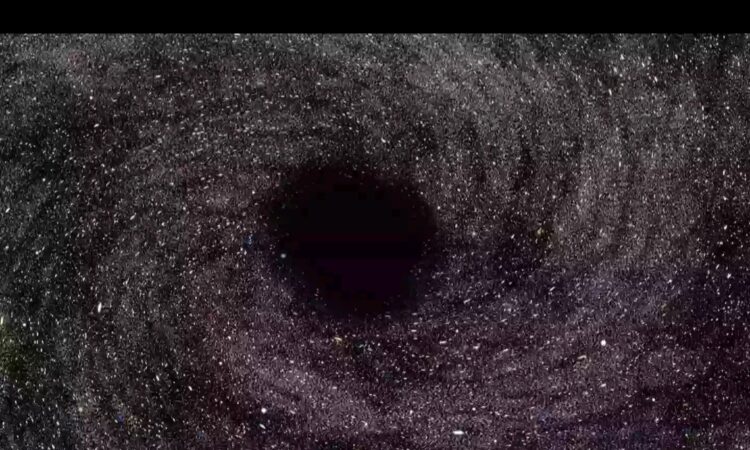
Scientists recently discovered something incredibly rare in space a lone black hole drifting by itself through our galaxy. This kind of find is so unusual that they say it’s like winning a cosmic lottery. In fact, the chances of spotting such a black hole are said to be “one in a million.”
Normally, black holes are very hard to detect because they don’t shine or reflect any light. They’re like invisible traps in space. They pull everything toward them with such strong gravity that even light can’t escape. That’s what makes them almost impossible to see with regular telescopes. But in this case, scientists noticed something odd happening with the light from a distant star, and that’s what led them to this black hole.
This particular black hole is about seven times heavier than our Sun and is located in a part of the galaxy known as Sagittarius, which lies roughly 5,000 light years away from Earth. That might sound far, but in space terms, it’s pretty close. It’s actually much nearer than the supermassive black hole at the center of our galaxy, which is about 27,000 light years away.
What makes this discovery even more amazing is how the scientists found it. They didn’t see the black hole directly. Instead, they noticed that the light from a star behind it was bending and getting brighter for a while. That’s because the black hole’s gravity was pulling on the light, acting like a magnifying glass. This phenomenon is called gravitational lensing. It’s like when you look at something through a curved piece of glass and it looks bent or larger. This bending of light helped the researchers figure out that something incredibly massive but invisible was passing in front of the star.
Scientists started watching this patch of sky back in 2011 using the Hubble Space Telescope. They kept monitoring it for six years, patiently collecting data. Over time, they saw stars shift slightly out of place and brighten in ways that didn’t make sense—unless something with a lot of mass was moving through the area. After careful study, they realized it could only be a black hole causing the strange effect.
At one point, another group of scientists argued that it might just be a neutron star—a very dense leftover from an exploded star, but not as massive as a black hole. However, the most recent and detailed observations confirmed that the object is far too heavy to be a neutron star. It has to be a black hole.
Black holes like this one are actually believed to be all over the galaxy. Some experts think there might be as many as 100 million of them. But because they’re invisible and usually not doing anything to give themselves away, we hardly ever find them. They just sit quietly in space, unless they happen to pass in front of a star, like in this rare case.
Stephen Hawking, the famous scientist, once described what black holes do in a vivid way. He said that anything falling into one would get stretched out like spaghetti because the gravity is so powerful it pulls harder on one part of your body than the other. That dramatic effect is why black holes have such a spooky reputation in science.
The lead researcher in this discovery, Kailash Sahu, said it takes a lot of time and data to make these findings. You have to wait and watch for years to catch a black hole in the act of revealing itself. He hopes that when a new, more powerful telescope the Nancy Grace Roman Space Telescope is launched in 2027, they’ll be able to find even more of these mysterious objects hiding out in the galaxy.





